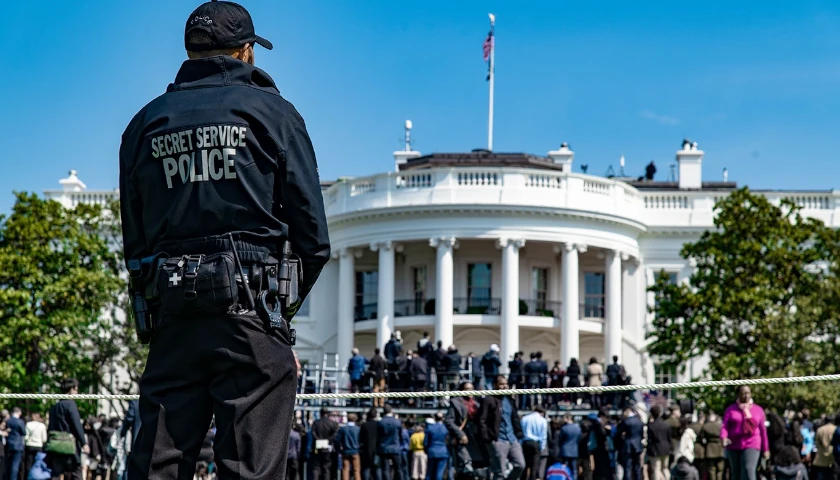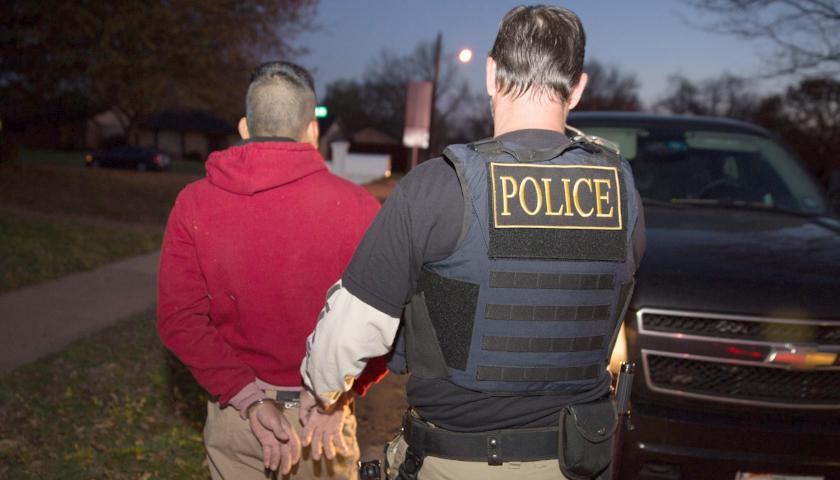by Susan Crabtree
Inflexible Secret Service protocols, overworked special agents, and a decision against deploying more counter snipers to President Trump’s rally in Pennsylvania all contributed to creating the opening for a gunman to wound Trump, kill a bystander, and seriously injure two others, according to several sources in the Secret Service community.
Less than 48 hours after Trump narrowly avoided an assassination attempt, the Secret Service is facing its biggest crisis in decades. Lawmakers are demanding answers from the insular agency about its security decisions and failures, which allowed 20-year-old Thomas Crooks to crawl onto a roof and fire seven rounds at Trump and into the crowd before a Secret Service counter sniper returned fire, killing Crooks.
Lawmakers in the House and Senate on Sunday vowed to investigate any and all agency lapses that created the opportunity for such a close call on the former president’s life and the death of an innocent rally attendee, demanding testimony and documents from the Secret Service as agency officials remained silent on any potential failures.
Several sources within the Secret Service community told RealClearPolitics they are furious about the failures and blamed agency management, not the agents and counter snipers on the ground, all of whom they said performed admirably.
Instead, they said, several factors contributed to Saturday’s security lapses, including that first lady Jill Biden was having an event the same day in nearby Pittsburgh, and Vice President Kamala Harris was having another in Philadelphia, taking up some of the local Secret Service resources that could have been used to help protect Trump’s rally.
Secret Service spokesman Anthony Guglielmi denied that Secret Services resources were diverted to the first lady’s event from Trump’s but declined to provide answers to several emailed questions about that charge and several other questions being raised about potential security lapses on Saturday.
“[T]his is very wrong,” Guglielmi tweeted. “We did not divert resources from FPOTUS Trump, & protection models don’t work that way.”
Another factor, according to these sources within the Secret Service community, was that the agency was relying heavily on supplemental special agents (not Trump’s regular team of special agents) and local law enforcement because many special agents in Trump’s regular protective detail were overburdened and needed to take time off after working several consecutive seven-day weeks.
The site agent, who is in charge of putting all security measures for a particular event in place, was a relatively new agent from the Pittsburgh field office with limited experience, a Secret Service source told RCP.
“Trump has a permanent detail, however, it’s much smaller in the number of bodies than the president’s,” the source explained. “His detail has been worked so hard with all the travel that they’re working seven days a week with shift changes, so headquarters sends in temporary agents to supplement. Not a good scenario.”
This is not unusual for a former president to experience, but the threats against Trump, the only former president in modern political history to run again and one who has faced prosecutions and comparisons to Hitler from Democrats, are obviously greater than most ex-commanders in chief whose profiles have tended to decline after leaving public office.
In reacting to the shots fired, the Secret Service special agents assigned to Trump that day fulfilled their mission, using their bodies as human shields to protect Trump and ferry him to his motorcade and safety. Yet, some critics have pointed out that the agency’s emphasis on diversity, equity, and inclusion during Secret Service Director Kimberly Cheatle’s tenure was on display in the shooting aftermath when a female agent covering Trump spread her arms to provide more coverage.
“She did a great job,” one source remarked. “However, she looked like she was about 5’5”. Trump was exposed from the chest up because he towered over her.”
An online petition demanding an “investigation for resignation” and removal of Cheatle over her DEI hiring policies was created on May 6. On Sunday alone it collected 7,419 signatures for a total of 8,567 signatures.
Billionaire Elon Musk called for Secret Service Director Kimberly Cheatle to resign over the failure to protect the president from the gunman on Saturday. Musk reposted a tweet from hard-right activist Jack Posobiec, who asked, “How was a sniper with a full rifle kit allowed to bear crawl onto the closest roof to a presidential nominee?”
“Extreme incompetence or it was deliberate,” Musk wrote. “Either way, the SS leadership must resign.”
Sen. Josh Hawley, a Missouri Republican, called the assassination attempt “the worst security failure for a president since JFK.”
Trump allies, including his former acting DHS Director Chad Wolf, are also questioning whether the Secret Service is using similar resources that it would use for past presidents Obama or Bill Clinton, instead of a more robust protective detail.
“At the end of the day, this is a complete security failure,” Wolf told Fox News Sunday afternoon. “Is it because of a lack of resources? They are using what they normally would for a former president, but President Trump is not a normal former president.”
Secret Service officials in charge of the event provided only two counter-sniper officers when such an exposed outside rally would normally call for the use of two to three two-man teams, the source continued.
Sen. Pete Ricketts, a Republican from Nebraska, late Sunday sent a letter to Cheatle and Homeland Security Secretary Alejandro Mayorkas demanding answers to some of the questions first raised in RealClearPolitics’ reporting. One of those questions focused on Secret Service rules of engagement when identifying an armed potential threat.
“Did any member of the Secret Service or any other law enforcement member request permission to engage the shooter?” Ricketts asked in a letter obtained by RCP. “Were any such requests denied?”
Moments after Saturday’s attempted assassination, when live images of Trump clutching a bloody ear and raising his fist in defiance appeared on cable news and social media, critics almost immediately began to question why Secret Service snipers didn’t fire sooner amid reports that onlookers were pointing to Crooks, who was positioned and crawling on a nearby roof, before he managed to fire seven shots at Trump and the crowd.
A source within the Secret Service community told RCP that the agency’s rules of engagement in this situation are for a counter sniper who suspects an armed threat to radio the lead agent in charge and wait for a green light or wait until the president is fired upon to return fire.
But others suggested that that policy may apply only to the White House, and that counter snipers are allowed to fire upon armed targets threatening the president. Ricketts also demanded to know whether anyone within the Secret Service raised concerns prior to the rally about the building used by the shooter.
“Transparency brings accountability,” the Nebraska Republican wrote. “For Congress to conduct objective and independent oversight concerning this heinous attempt on President Trump’s life, please respond to [these series of questions] by no later than Aug. 14.”
Rep. Steve Scalise, in an interview with Fox News Sunday afternoon, described the Secret Service failures on Saturday that led to Crooks being able to fire on Trump and the crowd from a nearby rooftop as “inexcusable.”
“This is the nearest building that was outside the [event] perimeter that was covered by magnetometers,” he said. “These are the kinds of questions we have. There have got to be answers. Somebody on the ground was responsible for making this [event] happen and failed miserably.”
The Louisiana Republican survived a life-threatening gunshot wound by an armed assailant during a congressional baseball practice session in 2017. Scalise suffered a shattered bone in his left hip and internal injuries that caused severe bleeding, and went through multiple surgeries for management of a deep-tissue infection related to the bullet wounds.
Florida Republican Rep. Mike Waltz, a former Green Beret, insisted Sunday that Trump’s advisors repeatedly requested more security for the former president. Secret Service spokesman Guglielmi has denied that claim, but Waltz stands by his assertion, citing “very reliable sources.”
House Oversight Chairman James Comer on Saturday called Cheatle to appear before his committee on July 22. Rep. Mark Green, who chairs the House Committee on Homeland Security, talked to Cheatle on Sunday and plans to have a briefing with agency officials Monday. Green requested key documents and a briefing about the security provisions for the Trump rally-turned-FBI crime scene. Green sent a letter to Cheatle expressing “serious concern regarding how a shooter was able to access a rooftop within range and direct line of sight of where Trump was speaking.”
One of the Secret Service sources told RCP that a paper trail likely exists about how many counter snipers and special agents the agency advance team, which plots out detailed security plans for events ahead of time, requested. The lead advance agent usually submits a manpower request to headquarters, which includes the number of counter snipers, post-standers, and magnetometers needed for a particular event.
“We always make sure that our requests are in writing so we would have a paper trail in case of the present scenario we have in Butler,” the source said. But the same source complained that there was always “a do-more-with-less mentality.”
The Secret Service briefed reporters Sunday afternoon in Milwaukee about the status of security at the convention but declined to discuss any possible lapses before and during Trump’s Saturday rally. The spokeswoman expressed confidence in the agency’s security plan for the Republican convention, which begins today in Milwaukee.
Despite reports that the agency was strengthening some aspects of security after the attempted assassination against Trump, the spokeswoman said there are no changes to the original plan and noted that the agency believes it has the resources it needs to execute it.
Warning signs about the Secret Service emerged months before the attempted assassination attempt against Trump. Earlier this year, the agency came under scrutiny for its diversity, equity, and inclusion policies after a female agent’s apparent mental breakdown and physical attack on her superiors at Joint Base Andrews in April.
In late May, Comer launched an investigation into the lingering agency DEI hiring and vetting policies. The House Oversight Committee held a June 24 briefing with Secret Service officials and afterward thanked the agency for cooperating with the probe.
“The USSS provided the Committee on Friday a thorough briefing for staff, and we appreciate their time and ongoing cooperation as we continue to conduct oversight to ensure the Secret Service is fulfilling its mission,” the committee spokeswoman told RCP. “Questions remain regarding recruiting, vetting, training, and morale at the agency and the Committee looks forward to receiving additional information from the agency soon.”
– – –
Susan Crabtree is RealClearPolitics’ national political correspondent.
Photo “United States Secret Service Members” by United States Secret Service.





